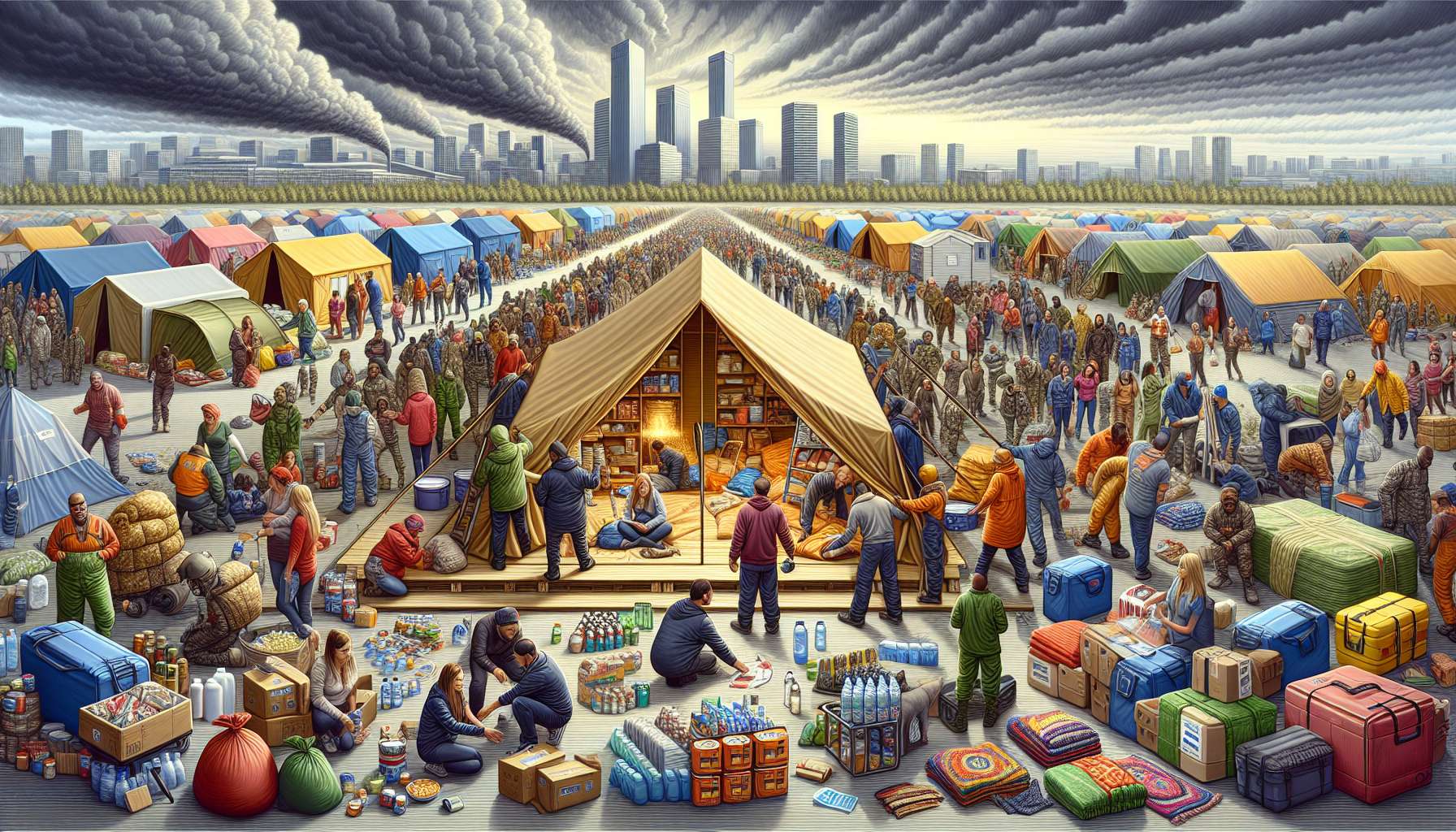Exploring the World of Emergency Shelters: A Comprehensive Guide
Emergency shelters play a vital role in providing temporary refuge for individuals and communities facing crisis situations. Whether it’s due to natural disasters, conflicts, or other emergencies, these shelters serve as a lifeline for those in need. In this article, we will delve into the world of emergency shelters, exploring their significance, types, challenges, and innovations. Join us on this journey as we unravel the complexities of emergency shelter systems and their impact on society.
The Evolution of Emergency Shelters
Emergency shelters have a long history dating back to ancient civilizations. In times of war or natural calamities, people sought shelter in caves, tents, or makeshift structures. Over the years, the concept of emergency shelters has evolved, with governments, NGOs, and humanitarian organizations playing a crucial role in providing shelter to displaced populations. Today, emergency shelters come in various forms, from basic tents to more robust structures designed to withstand harsh conditions.
One of the most significant developments in emergency shelter architecture was the creation of the “Shelter Cluster” by the United Nations in 2005. This initiative aimed to coordinate the efforts of various organizations involved in shelter provision during emergencies, ensuring a more systematic and efficient response.
Types of Emergency Shelters
Emergency shelters can be classified into different categories based on their design, purpose, and location. Some common types of emergency shelters include:
1. Tents
Tents are one of the most widely used forms of emergency shelters due to their portability and ease of setup. They are commonly used in the immediate aftermath of a disaster to provide temporary housing for displaced individuals. Tents can vary in size and design, ranging from simple tarpaulin shelters to more robust structures equipped with insulation and ventilation systems.

2. Transitional Shelters
Transitional shelters are more durable and permanent than tents, designed to provide medium-term housing solutions for displaced populations. These shelters are often made of more substantial materials like wood, metal, or plastic and can withstand harsh weather conditions. Transitional shelters are crucial in the rebuilding phase after a disaster, offering a sense of stability and security to those affected.
3. Container Housing
Container housing involves repurposing shipping containers into living spaces for emergency shelter purposes. These containers are durable, weather-resistant, and easily transportable, making them ideal for rapid deployment in disaster-affected areas. Container housing is gaining popularity due to its cost-effectiveness and sustainability, offering a more permanent housing solution for displaced populations.
Challenges in Emergency Shelter Provision
While emergency shelters play a critical role in disaster response and humanitarian aid, they also face several challenges that can hinder their effectiveness. Some of the key challenges in emergency shelter provision include:
1. Limited Resources
One of the primary challenges in emergency shelter provision is the limited availability of resources, including funding, materials, and manpower. In many cases, humanitarian organizations struggle to meet the growing demand for shelters due to resource constraints, leading to overcrowding and inadequate living conditions for displaced populations.
2. Sustainability
Ensuring the sustainability of emergency shelters is another significant challenge faced by organizations involved in shelter provision. Many emergency shelters are designed for short-term use and may not meet the long-term housing needs of displaced populations. Finding sustainable solutions that balance immediate relief with long-term recovery remains a complex issue in the field of emergency shelter provision.
3. Cultural Sensitivity
Cultural considerations play a crucial role in the design and implementation of emergency shelters. It is essential to respect the cultural norms and preferences of displaced populations when providing shelter solutions to ensure their safety, dignity, and well-being. Failure to consider cultural sensitivities can lead to social tensions and conflicts within shelter communities.
Innovations in Emergency Shelter Design
Despite the challenges, there have been significant innovations in emergency shelter design and construction in recent years. These innovations aim to address the shortcomings of traditional shelter solutions and improve the quality of life for displaced populations. Some notable innovations in emergency shelter design include:
1. 3D-Printed Shelters
3D printing technology has revolutionized the construction industry, allowing for the rapid and cost-effective production of shelter components. 3D-printed shelters are lightweight, durable, and customizable, making them ideal for emergency shelter applications. Organizations like New Story and ICON have pioneered the use of 3D printing in creating affordable housing solutions for disaster-affected communities.
2. Solar-Powered Shelters
Solar-powered shelters utilize renewable energy sources to provide electricity, heating, and cooling to displaced populations. These shelters are environmentally friendly, cost-effective, and sustainable, reducing the reliance on traditional fuel sources. Solar-powered shelters are particularly beneficial in remote or off-grid areas where access to electricity is limited.
3. Modular Shelter Systems
Modular shelter systems consist of prefabricated components that can be easily assembled and disassembled to create customizable living spaces. These systems are versatile, scalable, and adaptable to different environmental conditions, making them ideal for emergency shelter applications. Modular shelter systems offer flexibility and efficiency in responding to the varying needs of displaced populations.
Expert Opinions on Emergency Shelters
We reached out to Dr. Sarah Jones, a leading expert in emergency shelter design and humanitarian architecture, to get her insights on the importance of emergency shelters. According to Dr. Jones, “Emergency shelters play a critical role in providing immediate relief to displaced populations and protecting vulnerable individuals during crises. It is essential to prioritize the design, construction, and maintenance of emergency shelters to ensure the safety and well-being of those in need.”
Common Misconceptions about Emergency Shelters
There are several misconceptions surrounding emergency shelters that can impact the perception and effectiveness of shelter programs. One common misconception is that emergency shelters are only meant for short-term use and do not address the long-term housing needs of displaced populations. In reality, emergency shelters can serve as transitional housing solutions until more permanent housing options are available.
Conclusion
In conclusion, emergency shelters play a crucial role in providing shelter, safety, and support to individuals and communities facing crisis situations. From tents to transitional shelters to innovative housing solutions, emergency shelters come in various forms to meet the diverse needs of displaced populations. While there are challenges and limitations in emergency shelter provision, ongoing innovations and advancements in shelter design offer hope for more sustainable and effective solutions in the future.
To wrap things up, it is essential to recognize the significance of emergency shelters in humanitarian aid efforts and disaster response. By prioritizing the design, sustainability, and cultural sensitivity of emergency shelters, we can ensure that displaced populations receive the support and protection they urgently need. Let’s continue to push the boundaries of innovation and collaboration in the field of emergency shelter provision to build a more resilient and compassionate world for all.




